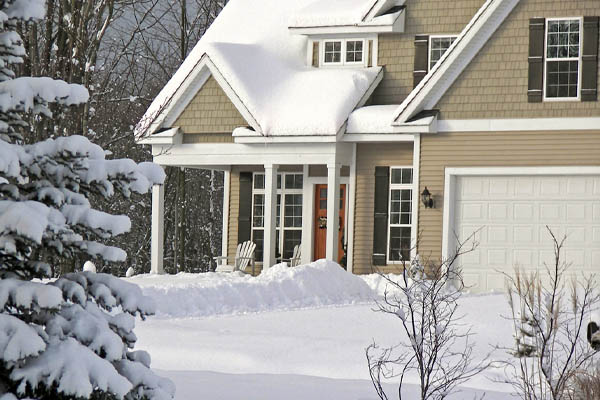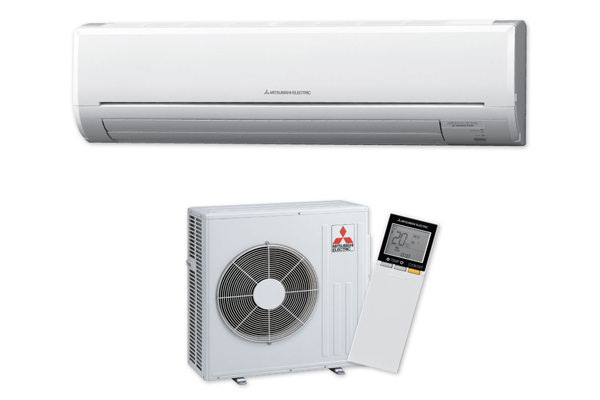How To Keep Your Mini-Split Working Through The Winter

Creating temperature zones in your home using your ductless mini-split will give you better control over your indoor environment. HVAC zoning, using a ductless heating and cooling system, lets you enjoy the perfect temperature in every room.
When using a ductless mini-split HVAC system, you will receive conditioned air that is the right temperature every time. In summer, this system uses refrigerant to absorb heat from the room before releasing it outdoors. In winter, the heat mode is turned on, reversing the process. However, when it is extremely cold outside, absorbing heat from the outdoor air is challenging, affecting the performance and efficiency of the system. However, there are tips you can follow to ensure that your ductless system provides you with the warmth and comfort you need.
Making Sure Your Ductless Mini-Split System Is Ready For Winter
Contents
- Making Sure Your Ductless Mini-Split System Is Ready For Winter
- Invest In A Ductless Heat Pump
- Consider A High HSPF Rating
- Outdoor Ductless Unit: Installation Tips
- Utilizing The Defrost Mode Of A Ductless Heat Pump
- Getting The Indoor Air Handler Mounted
- How To Deal With Ductless Mini-Split Heat Pump Limitations
- Determining The Right Pipe Sizes For Your Ductless Unit
- Handling Noises
- Using Ductless Air Conditioning In Winter
- Check Out One Of Our Ductless Installation Projects
- In Conclusion
- Call R.F. Ohl For All Of Your Home Comfort Requirements
Winter is not the time you would want your mini-split to fail. By following the tips below, you will be able to ensure that your ductless HVAC system will perform and remain reliable and efficient throughout the cold months.
Invest In A Ductless Heat Pump
When buying a ductless HVAC system, make sure to get a ductless heat pump to keep your home warm during colder months. A heat pump offers several benefits. It is flexible enough to allow you to create different temperature zones throughout the home. Also, it is compact enough not to require too much space. Heat pumps do not produce or generate heat, but they will move heated air and help distribute it. As a result, your system will not consume too much energy and yet still produce quality output that will ensure comfort indoors.

Consider A High HSPF Rating
If you live in a location that experiences very low temperatures during winter, you definitely should consider getting a heat pump. A heat pump can keep indoor temperatures high, even as outdoor temperatures plunge below zero. The Heating Seasonal Performance Factor or HSPF rating is a key figure to look for when choosing a heat pump. A high HSPF rating is an indication of the unit’s reliability and efficiency. A ductless unit with a high HSPF will not only keep your home warm in winter, but it will also save on the cost of energy.
Some of the best heat pumps are those that combine a high Seasonal Energy Efficiency Ratio (SEER) and HSPF ratings. Some Mitsubishi mini-split models, for example, boast a SEER rating of 33.1 and HSPF rating of 13.5. These mini-split models offer excellent energy efficiency and reliability.
Outdoor Ductless Unit: Installation Tips
A ductless mini-split system has three major components: the compressor, the conduit line, and the indoor air handler. The conduit line connects the air handler and the compressor. The outdoor unit is responsible for releasing air out of the home. When installing the outdoor unit, the HVAC contractor must ensure that they place it in an area of the house where it can operate without obstructions. After all, the heat pump is expected to run at full capacity during winter.
The outdoor compressor is generally mounted at least 24″ from the ground level. This height will help protect it from ground snow and snowdrifts in case of heavy winds. If the compressor is mounted too low, it could suck the snow into the system. As a result, the unit will have to work harder to melt the snow and keep your home warm. At a reasonable height, the compressor will remain safe and function properly throughout the cold winter season.
Another essential tip to remember is to ensure that the compressor is protected. The HVAC contractor should consider installing the compressor unit under an overhang to provide it with shade during summer and protect it from rain and snow. If an overhang is not available, consider building small roofing to cover the compressor. Make sure the roofing is high enough to allow unobstructed airflow.
Utilizing The Defrost Mode Of A Ductless Heat Pump
When the ductless mini-split is turned on to keep your home heated, the condenser coil often begins to collect frost. To keep the condenser coil clear, turn the defrost setting on to melt the frost. The melted ice will be collected in a drain pan, which will carry this liquid away from the unit.
However, on days when temperatures are too low, water that has collected in the drain pan could freeze. If the ice becomes too thick, the fan blades could freeze. It is also possible that moisture could become trapped in the fin coils and freeze. Should this happen, the coil fins could crack. This is the type of damage you want to avoid because it is quite costly to repair. A good solution is to install a heater for the drain pan to prevent the water from freezing.
Remember to buy a heater that matches the brand, make, and model of the condenser you have. Ask an HVAC contractor to mount the drain pan heater and connect it to the condenser control board. That way, the heater will automatically turn on when temperatures fall. When the drain pan heater is turned on, it eliminates any issues that arise from your drain pan.
Getting The Indoor Air Handler Mounted
Ideally, the indoor air handler should be mounted at least 1 1/2 feet from the floor. Warm air rises, which means the air handler at a low position will allow warmed air to be distributed evenly and effectively. The even heating will ensure a comfortable warmth throughout the room and will not cause overheated spots. Air handlers mounted away from the floor will also make it easier to clean and replace air filters.

How To Deal With Ductless Mini-Split Heat Pump Limitations
The heat pump for your mini-split ductless system may not heat up your home immediately. As such, any limitations it has must be compensated. Doing so will also help you save on energy costs. To do this, use the unit wisely. You could, for example, set the thermostat at a lower temperature when no one is at home. You could even set the thermostat lower if you are gone for longer periods. For example, you could set the temperature at 60 degrees F or lower if you are at work or set the temperature at 50 degrees F if you are going on a vacation. If you are going to sleep, consider setting the temperature at 60 degrees F. These temperatures may seem too low but they actually keep the home comfortable and save you money at the same time.
Do not worry that setting the thermometer too low will reduce the efficacy of the system. It will continue circulating warm air. When air is consistently warm indoors, you are assured that no cold spots will develop.
Determining The Right Pipe Sizes For Your Ductless Unit
In general, you will need at least 15 feet to connect the indoor and outdoor units sufficiently. The length of piping will reduce the noise for both components significantly. You may, of course, require longer pipes depending on the location of your components. Keep in mind that longer piping will often reduce the efficiency of the system.
Handling Noises
The ductless mini-split system will produce a whooshing sound during operation. The noise is not very loud, and homeowners easily adapt to it. The whooshing sound is typical, and should you hear this on a new or relatively new system, there is no need to worry. If you want to know how that whooshing sounds like, visit any mini-split distributor’s showroom and listen to the sound yourself. See if the level of noise is acceptable for you. In all likelihood, you will find that the noise should not bother you as much. The noise is minimal, but if you prefer an ultra-quiet environment, this system may not be the best option for you. However, keep in mind that the ductless system is quite popular among homeowners who find the noise it makes tolerable. Many even report that they have no problems working, talking, or sleeping with the system turned on. Many actually forget that the system is on and forget to turn it off when leaving.
Using Ductless Air Conditioning In Winter
If you use the mini-split system to distribute cold air to traditionally warm rooms such as the kitchen or the dining room, you will need a system that runs all year, regardless of outside temperatures.
You must choose a system that can serve your needs to avoid discomfort and safety issues indoors. A system that is overworked or underworked will fail and develop problems. In some cases, you simply need a supplemental accessory. Wind baffles, for example, can help prevent cold air from outside to affect your outdoor compressor. Installing a wind baffle will allow your condenser fan to control air that passes over the coil.
There is a caveat, however. Some mini-split models cannot be fitted with wind baffles and similar accessories. If you happen to live in an area that experiences very cold wind in winter and you intend to use year-round cooling, consider a system that is compatible with wind baffles.
Check Out One Of Our Ductless Installation Projects
In Conclusion
Ductless mini-split systems are reliable and energy-efficient. They work remarkably well all year round and are more cost-effective than other types of HVAC systems.
With the winter months just around the corner, make sure you have a reliable source of heat before temperatures begin dropping. Talk to a reputable HVAC technician, like R.F. Ohl, on how to install a ductless mini-split in your home.
HVAC professionals are trained and knowledgeable in helping you identify the best heating and cooling solutions for your home to keep it comfortable and warm during the coldest winter seasons. When you find a seasoned technician, you know you have someone you can trust to help you determine the right type of HVAC system that will create a comfortable indoor home environment for you and your loved ones regardless of the season.
Call R.F. Ohl For All Of Your Home Comfort Requirements
If you want to discover what a ductless HVAC system can do for you, call R.F. Ohl. Our NATE-certified technicians will help you determine the type of HVAC system that works best for your needs.
R.F. Ohl is one of the region’s leading full-service HVAC companies. We offer a wide range of HVAC services, from installations and tune-ups to repairs and consultations. We can help you find different approaches and solutions to ensure that our services meet your requirements and budget. Call us today for a free, in-home estimate.
Click here to contact us today or give us a call at (610) 377-1098 if you have any questions.
